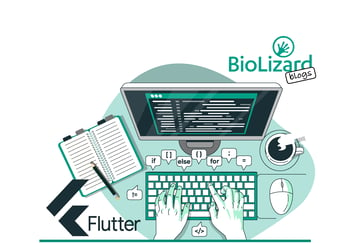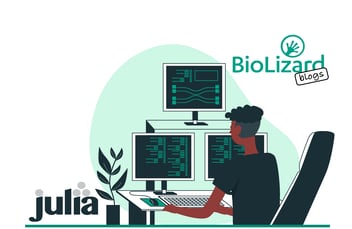3 rules of thumb for developing a biomarker
Developing a biomarker – either for diagnosis or supporting drug development – is a costly and time-consuming process. Over the years, we’ve built up reliable experience concerning this topic. That’s why in this blog, we’ll share three rules to remember when developing biomarkers: one during biomarker discovery, one during biomarker development and one during biomarker validation.
Biomarker discovery: map out your gold standard
The goal of using a biomarker is to objectify a person’s physiological state. In general, a biomarker will…
- determine if a disease is present in someone,
- predict how a disease will develop, or
- predict the response of a specific therapy.
However, before a biomarker can do this, you will need to know what you are looking for. The starting point of biomarker development relies on a specific disease detection gold standard: if the test result of the measured biomarker comes back positive, this result will also need to be validated independently.
If you don’t have a gold standard for what you are objectifying, it’s impossible to develop a biomarker. For example, how can you make a biomarker for chronic fatigue syndrome? There is no way to measure this disease objectively. If you can’t prove a disease is present in a patient, you can’t expect your biomarker to tell you either.
The next question that arises is: ‘If you can tell that someone has a particular disease, why even bother making a biomarker?’ An excellent example concerning this question comes from colorectal cancer, where polyps inside someone’s intestines can only be found by performing a colonoscopy. Only by locating and identifying these polyps, are you able to diagnose that this person has cancer. This is a clear gold standard. The examination is effective but only at a late stage of the disease, and it is not very pleasant for the patient. Developing a liquid biopsy biomarker could make diagnosis less intrusive and more pleasant for this patient. Most importantly: the biomarker could even detect colorectal cancer at an earlier stage, making it easier to treat and improving survivability.
In summary, to develop a biomarker, you need a good gold standard to identify what you are looking for, and it needs to add value to the diagnosis and treatment of a certain disease.
Biomarker development: enrol a high-risk population
The most time-consuming and resource-intensive stage for biomarker development is phase 3. To know if your biomarker detects or predicts the presence of a disease, or if the biomarker can indicate a response to a certain therapy, you need to have patients in your study that actually have the right profile. Here, our tip is: enrol a high-risk population to have a more efficient, shorter, and cheaper testing stage.
Let’s have a look at bladder cancer. If you aim to develop a biomarker to identify this type of cancer, it’s a smart move to look at the specific symptoms and pathology of this cancer. People with bladder cancer tend to have blood in their urine. Does this mean that everyone with blood in their urine has bladder cancer? No, but the odds are a lot higher. This is your high-risk population. In other words, when testing your biomarker for bladder cancer, you need patients in your testing panel with blood in their urine.
Why is it so important to have a high-risk population in your study? Because if you don’t, you may need 100 000 subjects before you have enough cases that present with bladder cancer. When you reach out to patients with a higher risk, you will need fewer subjects for your study. That, it makes it easier to show a more substantial effect, and as a result, your trials will be shorter and cheaper.
Biomarker validation: create a win-win situation
Many biomarkers fail after they get marketed. All those years of research, all the investments – gone. It doesn’t even matter that your biomarker does what it promises to do, if there is no gain for doctors or caregivers. These are the people who will eventually be using your biomarker, and so you need to make sure they see value in your biomarker.
To convince doctors & caregivers to use your biomarker, conduct a cost-effectiveness study. Show them that your biomarker also provides economic benefits. A biomarker should either save costs or improve the quality of life - and preferably both. Also, make sure you prove this country by country. Work operations, procedures, and pricing of diagnostics change per country. This means that your biomarker’s position and marketability will change wherever you go around the globe.
Remember your data is your most valuable asset
When you keep these three key take aways in mind, your biomarker is more likely to be successful. And in addition to these three take aways, don’t forget the data that you generate throughout the whole process is your gold mine. Be sure to use and organize your generated data correctly when you develop biomarkers. We created an article about the most common pitfalls when developing biomarkers to help you. Be sure to check it out here.
We’d love to help you develop a winning biomarker!
Reach out to BioLizard today to get started.







